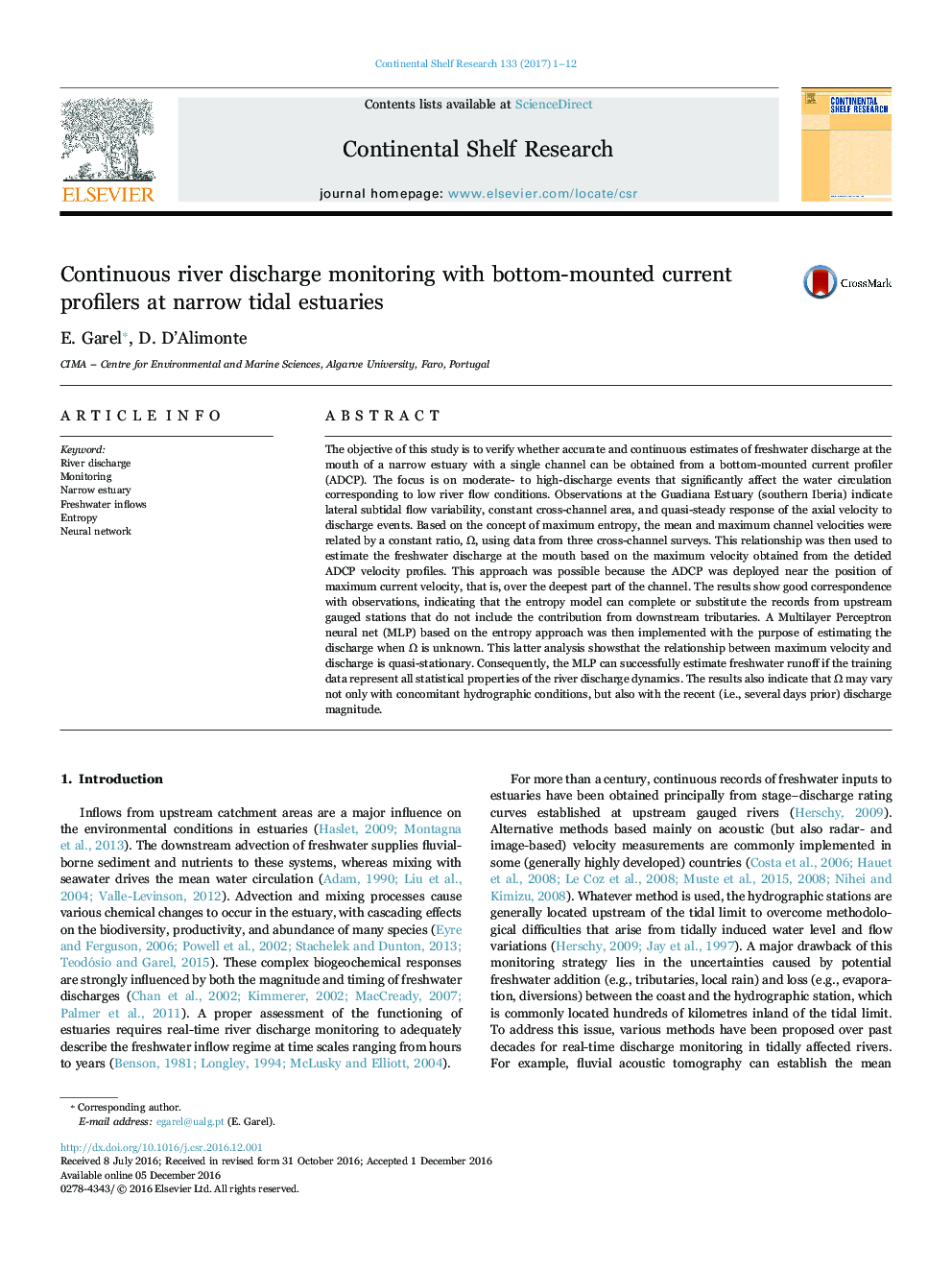| Article ID | Journal | Published Year | Pages | File Type |
|---|---|---|---|---|
| 5764515 | Continental Shelf Research | 2017 | 12 Pages |
â¢Continuous river discharge is estimated at the mouth of a narrow tidal estuary.â¢The estimates are computed using data from a bottom-mounted ADCP.â¢A probabilistic (entropy-based) approach provides accurate discharge estimates.â¢The ADCP must be deployed at the location of maximum flow (deep channel).â¢A neural net based on the entropy approach can estimate the river discharge.
The objective of this study is to verify whether accurate and continuous estimates of freshwater discharge at the mouth of a narrow estuary with a single channel can be obtained from a bottom-mounted current profiler (ADCP). The focus is on moderate- to high-discharge events that significantly affect the water circulation corresponding to low river flow conditions. Observations at the Guadiana Estuary (southern Iberia) indicate lateral subtidal flow variability, constant cross-channel area, and quasi-steady response of the axial velocity to discharge events. Based on the concept of maximum entropy, the mean and maximum channel velocities were related by a constant ratio, Ω, using data from three cross-channel surveys. This relationship was then used to estimate the freshwater discharge at the mouth based on the maximum velocity obtained from the detided ADCP velocity profiles. This approach was possible because the ADCP was deployed near the position of maximum current velocity, that is, over the deepest part of the channel. The results show good correspondence with observations, indicating that the entropy model can complete or substitute the records from upstream gauged stations that do not include the contribution from downstream tributaries. A Multilayer Perceptron neural net (MLP) based on the entropy approach was then implemented with the purpose of estimating the discharge when Ω is unknown. This latter analysis showsthat the relationship between maximum velocity and discharge is quasi-stationary. Consequently, the MLP can successfully estimate freshwater runoff if the training data represent all statistical properties of the river discharge dynamics. The results also indicate that Ω may vary not only with concomitant hydrographic conditions, but also with the recent (i.e., several days prior) discharge magnitude.
